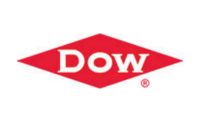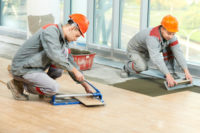A VELUX America commissioned study documents that adding venting skylights will result in energy cost savings when compared to a home without skylights.
Group14 Engineering, based in Denver, Colo., performed the study in 2014. The company specializes in energy modeling, daylighting and LEED strategy for architectural firms and building owners nationwide.
The study analyzes the energy cost, indoor air quality, and thermal comfort impacts of VELUX venting skylights, comparing them with those of whole house fans in residential homes. A vaulted ceiling 2,000 square feet two-story house located in Boston, Mass. is modeled with two levels of energy efficiency: Code Base Home and High Performance Home. The modeled house has a partial two-story high space with skylights above to investigate the stack effect impact.
EnergyPlus v8.0 along with Contam, LoopDA, and BEopt were used to analyze the coupling effects of air flow, contaminant flow, and energy flow.
Energy Costs
The study reveals that adding venting skylights will result in energy cost savings compared to a home without skylights. In the Code Base Home, the venting skylights generate $35 of annual energy cost savings from the home without skylights or natural ventilation. In the High Performance Home with reduced cooling loads, the venting skylights result in $17 of annual energy cost savings compared to the case without skylights. The savings are based on intelligent placement of the venting skylights for wind effects, a natural ventilation set point temperature of 75 degrees Fahrenheit and an integral rain sensor control.
Indoor Environmental Quality (IEQ)
In both the Code Base Home and High Performance Home, indoor air quality is significantly improved when the venting skylights are used leading to a very quick dilution of predictable indoor contaminant concentrations. (With the known physiological and psychological benefits of daylight, especially from the sky, IEQ is further enhanced).
Human Comfort
Both Fanger and Adaptive ASHRAE 55 thermal comfort models were used to analyze home comfort conditions. When the Adaptive ASHRAE 55 model is used to account for occupant's behavior and expectations adaptation during the natural ventilation mode, the study predicts slightly improved comfort conditions in both the Code Base Home and High Performance Home with venting skylights.
A whole house fan behaves similarly to venting skylights in terms of indoor air quality and thermal comfort improvements. However, contrary to claims by most whole house fan advocates, a whole house fan does not always reduce a home's energy cost. The natural ventilation savings are offset by fan energy in the study of homes located in Boston, Mass., even with an efficient fan motor.
The study was further extended to a one-story 2,000 square foot house to examine the energy cost impact of venting skylights. The analysis reveals a similar trend: in the one-story Code Base Home, adding venting skylights results in $27 of annual energy cost savings from the base case without skylights or natural ventilation; in the one-story High Performance Home, adding venting skylights results in $13 of energy cost savings for the base case without skylights or natural ventilation. The savings are also based on thoughtful placement of the venting skylights, a natural ventilation set point temperature of 75 degrees Fahrenheit, and an integral rain sensor control.
The full study report is available from VELUX America upon request. VELUX continues to study and document the role and effectiveness of skylights in providing daylighting and passive ventilation.
Further studies are under consideration that can account for shaded skylights, with both manual and automated controls, to reflect additional energy cost savings as well as glare control that may be realized at low initial added cost when specified at the time of skylight procurement.
“This study, like an earlier Group14 study on the energy impacts of residential skylights in different climates, provides additional empirical evidence that natural light and passive ventilation from skylights can contribute to the home's overall energy efficiency,” said Stephan Moyon, direct of sales for VELUX America.
VELUX America is an ENERGY STAR partner and has been recognized as a Partner of the Year. For more, visit www.veluxusa.com.









